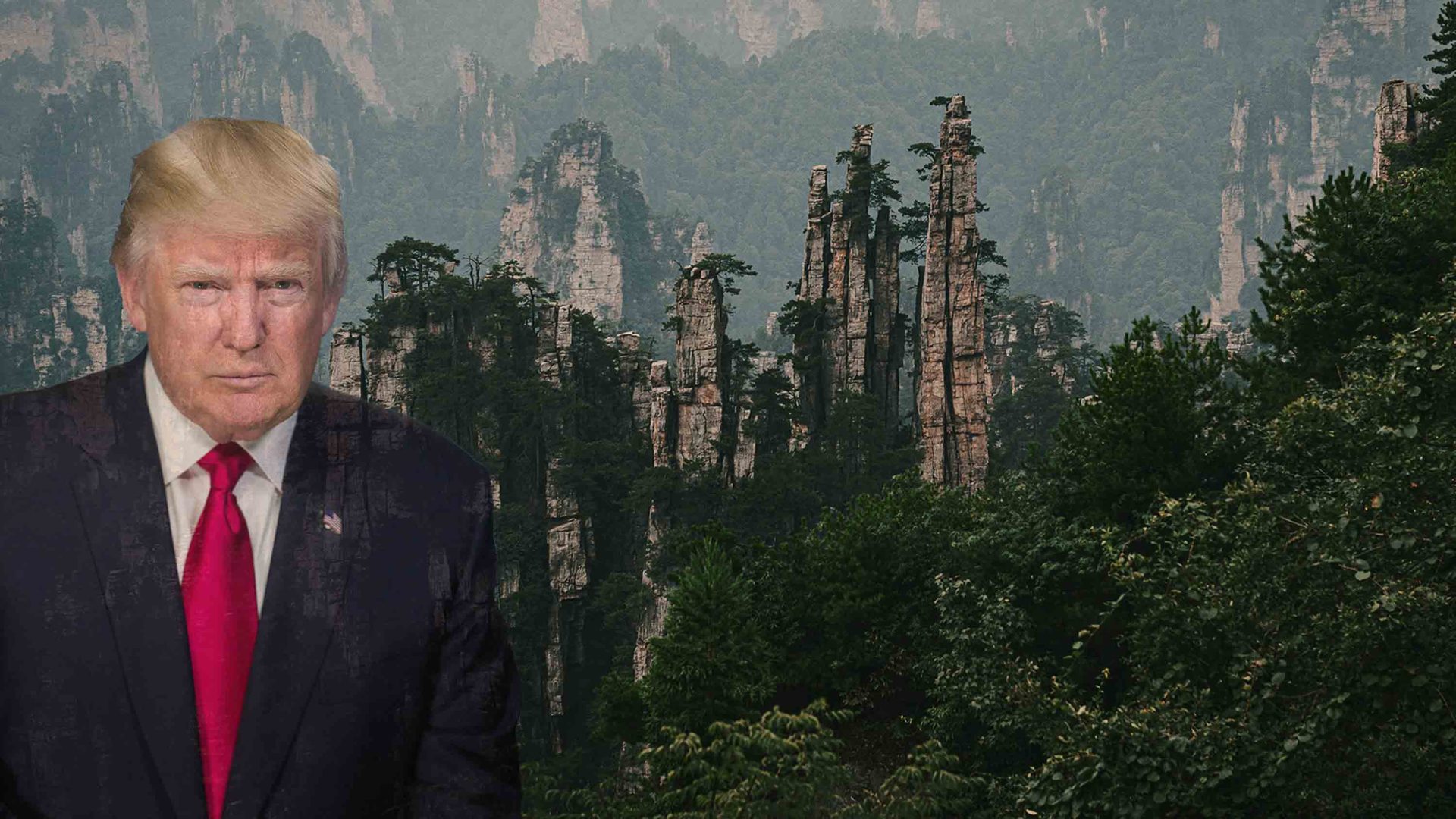
As the Trump administration cuts staffing and budgets at America’s national parks, China is ramping up its efforts to protect land. Contributing editor Gordy Megroz explores what the US can hope to learn from China’s ambitious plans.


As the Trump administration cuts staffing and budgets at America’s national parks, China is ramping up its efforts to protect land. Contributing editor Gordy Megroz explores what the US can hope to learn from China’s ambitious plans.
In June, I read a National Geographic story about how China is planning to build a bigger national park system than the US. The piece, about a China seemingly hell-bent on protecting public land no matter the cost, caught me off guard.
My entire life, China has been known as the world’s biggest polluter. Think Chinese environment and the first things that pop to mind are smoggy skies, discolored vegetation, and rivers so polluted they turn red. It seemed curious to me that a country with such a poor record on environmentalism is now aiming to outdo America at its own conservation game. As I conducted a little more research, something else struck me: China isn’t just building a bigger national park system than the US—it’s doing it smarter, too.
That should make us pause. Because while China is racing ahead, the US—the country that invented the very idea of national parks—is quietly letting its crown jewels decay. Under the Trump administration, the National Park Service has axed thousands of employees and squeezed budgets, even as visitation hits record highs. The result: Crumbling roads and dirty bathrooms, underpaid rangers stretched too thin, and less money to deal with invasive species, wildfires, and climate change. In short, the US could stand to relearn the value of its parks from the very country that most once dismissed as an environmental lost cause.
The United States has 63 official national parks and more than 420 protected sites (counting monuments and historic areas). Impressive, sure. But China’s plan dwarfs it. By 2035, Beijing intends to establish 49 national parks covering 272 million acres—roughly three times the land in our system. In just the first round, it designated five parks that span thousands of acres—throwing several hundreds of millions of dollars at the projects—and establishing large swaths of protected areas in places from Tibetan plateau glaciers to tropical rainforests.
Without decisive investment, our national parks may become monuments more to nostalgia than to thriving ecosystems that draw visitors and revenue.
This is China doing what China does best: Thinking big, moving fast, and spending serious money on a national priority. When President Xi Jinping declared in 2013 that clear waters and green mountains are “as valuable as mountains of gold and silver,” he wasn’t making a metaphor. He was setting policy. Since then, the government has poured resources into an “ecological civilization” initiative, and the national parks are a centerpiece of it.
Meanwhile, in Washington, debates over whether to repair a crumbling visitor center in Yellowstone can drag on for years. Our parks face a maintenance backlog of more than USD$20 billion. China’s approach may be top-down, but it’s effective. As China lays down entire networks of protected landscapes, US lawmakers haggle over patchwork fixes—repairing a bridge here, repaving a road there—while biodiversity slips through the cracks.
China being China, the country’s president is interested in how the parks system will affect its bottom line. In a paradigm shift, China’s leaders increasingly view conservation of nature as an economic asset, investing in forests, rivers, and wildlife because they’ve realized clean air and fresh water can be a means toward jobs and a healthier overall economy.
Policies reflect this mindset, and Chinese government officials have described a “win-win” strategy when it comes to integrating environmental protection with poverty alleviation. New national park rules prioritize benefits for residents, allowing locals to run eco-friendly businesses and giving them their first pick when it comes to park jobs, including being rangers, guides, and conservation stewards. According to Chinese state media, that’s provided work for roughly 650,000 people living inside the parks. More than 17,000 herders have been hired as rangers, boosting household incomes by roughly USD$3,000 per year. On the Tibetan Plateau, many of those former herders now patrol Sanjiangyuan National Park, monitoring snow leopards and cleaning riverbanks.
Likewise, America’s parks are proven economic engines, contributing more than USD$40 billion annually and about 325,000 jobs to the US economy—roughly a tenfold return on what taxpayers invest in park budgets. Despite that, national parks are often seen as recreation sites or discretionary budget items rather than essential assets. Park funding is frequently targeted when budgets tighten. After a record 331 million visits in 2024, a federal proposal still aimed to cut over USD$1 billion from the National Park Service—the largest reduction in its history.
The lesson is clear: By not treating nature as capital, America risks letting its greatest assets erode while its fiercest competitor reaps the rewards.
Though China’s parks are new, the early environmental signs are promising. Giant Panda National Park protects around 70 percent of the country’s wild pandas, whose numbers have rebounded enough that the species was reclassified from ‘Endangered’ to ‘Vulnerable’. In Northeast China Tiger and Leopard National Park, fences have been removed and wild Amur tiger sightings are up. Across the board, more than 200 rare animal species and 100 endangered plants are showing population gains since the parks were created.
If we want our parks to remain the global model, we can’t just admire Yellowstone’s geysers and Yosemite’s granite domes and hope nostalgia carries us through.
By contrast, the US has struggled to maintain such measurable conservation outcomes. Many iconic species—from grizzly bears to tiger salamanders in Yellowstone and bees and butterflies, which live through the parks systems—remain at risk, and habitat fragmentation outside protected areas continues to threaten biodiversity. And with staff and budget cuts, things will only get worse. There will be fewer biologists to monitor species, fewer rangers to police habitat protections, and fewer resources to restore degraded ecosystems. Invasive species will go unchecked, endangered animals will slip through the cracks, and crucial science programs will be scaled back, resulting in a lack of ecological integrity.
The lesson? China is seeing tangible biodiversity wins while the US is watching species slip further from safety. Without decisive investment, our national parks may become monuments more to nostalgia than to thriving ecosystems that draw visitors and revenue.
America pioneered national parks and inspired the world. Yet today, we’re underfunding them to the point of neglect. China, the world’s largest polluter, is now racing to protect a land mass three times the size of our system, integrating conservation with poverty alleviation, and talking about “natural capital” as if Teddy Roosevelt were whispering in Xi Jinping’s ear.
The irony should sting. The nation that gave the world one of its best ideas is now at risk of letting it slip away. The nation that once bulldozed its own environment is seizing on that idea and scaling it to levels we never imagined.
If we want our parks to remain the global model, we can’t just admire Yellowstone’s geysers and Yosemite’s granite domes and hope nostalgia carries us through. We need to invest in them boldly, staff them properly, and recognize that they are not just pretty places but essential infrastructure for our economy, our climate, and our culture.
Otherwise, when future generations look around for the world’s best park system, they might not think of the United States. They’ll think of China.









Can't find what you're looking for? Try using these tags: